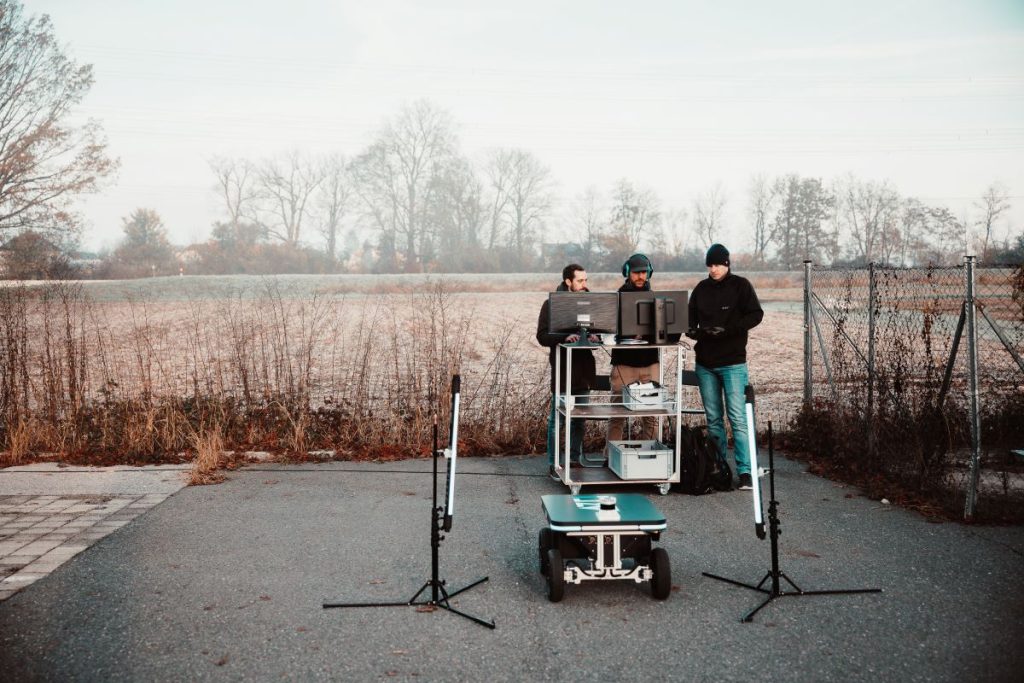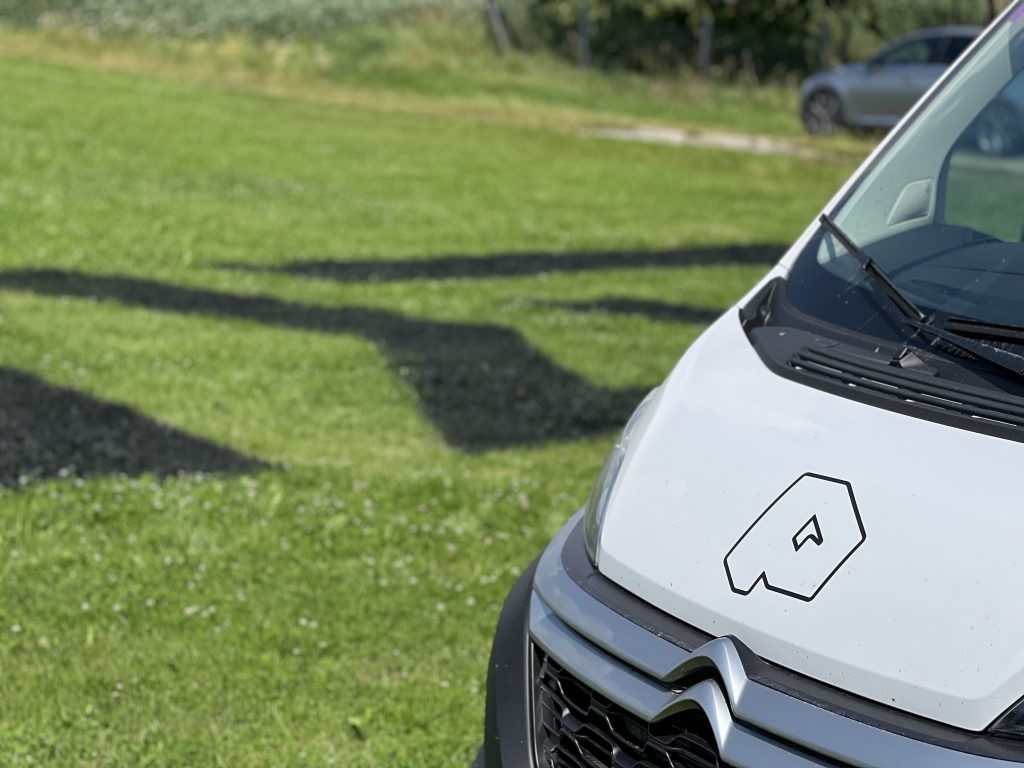When we began our collaboration with AVL through the Creators Expedition program, now known as AVL CREATORS, we knew we were expanding our expertise and contributing our know-how to a demanding yet crucial sector. Developing autonomous software for special vehicles such as agricultural tractors is not just about writing code; it’s about understanding the real-world complexities of farming as well as the challenging and ever-changing outdoor environments the technology must withstand. Additionaly, it is crucial to take rigorous safety standards into consideration, which are required when heavy machinery operates without a driver.
The Challenge – Making Autonomy Work in the Field
Unlike the controlled indoor use cases, where our AI Kits are used in warehouse logistics or on the premises, agricultural applications introduce entirely different and unique challenges. Fields are not mapped corridors with predictable layouts—they are dynamic, seasonally changing environments where lighting conditions shift dramatically, terrain ranges from soft soil to hardened ground, and weather can transform from clear skies to dense fog within minutes.
Making technology work in such challenging environments meant we had to focus intensely on how LiDAR-based navigation systems process environmental data and adapt accordingly. In a field, there are hardly any contours to map against—no clear boundaries that traditional SLAM algorithms rely on. Instead, we developed intelligent perception systems capable of recognizing crop rows, detecting obstacles ranging from small stones to farm workers, and navigating with high precision, even when GPS signals degrade or disappear.
System Architecture – Modular and Adaptable
We believe that the widespread adoption of autonomous technology in agriculture depends on offering vehicle manufacturers flexible solutions that integrate seamlessly into existing platforms. Instead of completely redesigning proven tractor models, OEMs can elevate their product portfolio by introducing autonomy as a modular system—enhancing their entire range with scalable, future-ready capability.
This principle has been at the core of ARTI’s vision from the beginning. Our AI Kits were developed to be fully hardware-agnostic, enabling seamless integration across diverse vehicle architectures. Designed for maximum adaptability, they support a wide variety of tractor models, sensor setups, and implement systems. This same approach defined our collaboration with AVL CREATORS, empowering manufacturers to accelerate their journey toward autonomy while maintaining their well engineered hardware.
Real-World Testing – Learning from the Field
The collaboration within the AVL CREATORS framework gave us access to AVL’s eTractor hardware platform, engineering expertise and testing facilities —but nothing can replace real-world field trials. Many challenges can arise during practical testing that might not have been anticipated beforehand. These can include issues such as dust accumulation on sensors, vibrations affecting IMU calibration, the inherent unpredictability of agricultural workflows and many others.
All these aspects had to be taken in consideration, when attempting the operation of heavy machinery in such challenging enviornments.
The Safety-First Approach
Perhaps the most critical aspect of this project has been safety engineering. When a small delivery robot malfunctions in a warehouse, the consequences are relatively limited. However, when a multi-ton autonomous tractor encounters an error, the stakes are exponentially higher. This is precisely why we chose to thoroughly analyze the safety concept. Our goal is to ensure that autonomous machines maintain all the safety standards you would expect from an experienced human operator, and even go beyond by guaranteeing reliable performance across diverse environments, use cases, and changing weather conditions.
Ease of Use – Web App and Simulation
One of the key benefits of the ARTI software is its ease of operation for farmers and technicians. The system features an intuitive web application that allows users to plan, monitor, and control autonomous tractor operations remotely. This web app offers real-time telemetry, path-planning tools, and definition of different areas – all configurable through a user-friendly interface accessible from the web browser.
Complementing the web app is a high-fidelity simulation environment, which was also used extensively during development. The simulation accurately replicates tractor dynamics and field conditions, enabling the testing of routes, boundaries, and responses to unforeseen obstacles before actual deployment. This reduces risk and accelerates adoption by building operator confidence in a controlled, virtual setting.
Together, the web app and simulation tools create an integrated digital experience that lowers the barrier to entry for autonomous farming technology—allowing users to transition seamlessly from manual to autonomous operation with minimal learning curve and maximum operational safety.

Looking Forward
The technologies we developed in collaboration with AVL CREATORS are already proving to be highly successful in addressing the challenges we face today. However, they are just the beginning, with the ultimate goal being perfect adaptability to future challenges. Working with the eTractor platform developed by AVL was an excellent way to advance the technology and prepare it for real-world scenarios, demonstrating the potential of such software and its positive impact on entire industries.
We will continue to refine the technology, expanding its capabilities to handle more complex tasks in the agricultural sector, delivering top notch solutions for future proof agricultural production and helping shape the future of sustainable food systems — something of truly global importance.
Ressources:
Kleine Zeitung – Fahrerlos aufs Feld
Brutkasten – Steirisches Startup ARTI und AVL machen Traktoren fahrerlos
MSN (Kleine Zeitung) – AVL und ARTI Robots: Steirer bringen fahrerlosen Traktor aufs Feld
MeinBezirk – AVL schickt Landmaschinen fahrerlos aufs Feld
WOCHE Steiermark – Der selbstfahrende Traktor
Welt Stimme – AVL und ARTI entwickeln autonom fahrende Traktoren in Graz-Umgebung
SFG – AVL und ARTI schicken Landmaschinen fahrerlos aufs Feld
Wirtschaftsnachrichten – AVL: Autonome Traktoren erobern 2026 Österreichs Felder
Wirtschaftszeit – AVL schickt Landmaschinen fahrerlos aufs Feld
Wirtschaftswelt – AVL schickt Landmaschinen fahrerlos aufs Feld



